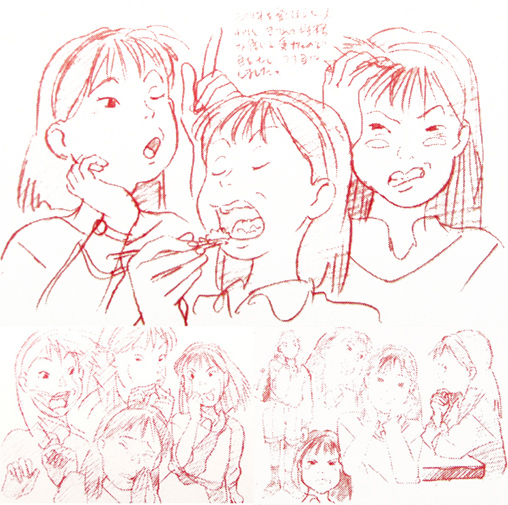All gifs in order
Akira (1988)
Porco Rosso (1992)
The Hakkenden (1994)
FLCL (2000)
Spirited Away (2001)
Ghiblies (2002)
The Animatrix (Kid’s Story) (2003)
Kill Bill (2003)
Ghost in the Shell 2: Innocence (2004)
Mind Game (2004)
Otogizoushi (2004)
Howl’s Moving Castle (2004)
Windy Tales (2005)
Tekkonkinkreet (2006)
Genius Party Beyond (2008)
Redline (2009)Happy Birthday to Shinya Ohira The Master of Expressionism and Abstraction. Ohira is an animator that comes from the line of Yoshinori Kanada inspired animators that all of a sudden diverged into their own thing once the post Akira realism boom came along. As a former mecha animator, he lent his hand heavy into effects, but once he got into character animation he started pushing the boundaries of what can be called conventionally good animation for anime. Regarded as one of the best at distorting figures, having the dirtiest linework, and also imbuing his animation with an almost a chaotic melting effect, Ohira since The Hakkenden Episode 10 is an envelope pusher. Him and his closest friend Shinji Hashimoto for 30 plus years have made some of the strangest and rough looking animation, having complete and total freedom with their cuts that present realism in a kaleidoscopic fashion rather than a grounded one. Unlike the other big five of realism Hiroyuki Okiura, Toshiyuki Inoue, Takeshi Honda, Tetsuya Nishio, and Mitsuo Iso their focus is not on having a linear sense of uniformity to bodies instead focusing on movement that is more so suggested than it is actually carried out. Despite his bizarre methods he has frequently been regarded as the second coming of a big time legacy auteur animator frequently working with the likes of Hayao Miyazaki and Masaaki Yuasa, among other big directors. He is one of Japan’s greatest animators and I’m going to go in depth on his history, influences, and why he does what he does.
So Ohira got his initial start on mecha animation, being one of the main focuses of the earliest part of his career. One of his biggest influences going into the early 80s when he started was of course Yoshinori Kanada which then took over into Masahito Yamashita who was one of Kanada’s biggest protege. Yamashita’s Wakame Shadows were a huge way of improving a shiny surface of a mecha, and perhaps giving more clerical detail to robots than needed. Ohira was already key animating by the age of 17 showing off some super impressive skill perfectly replicating Yamashita’s shading.
In 1985, on Ichiro Itano’s second part of Megazone 23 this was Ohira’s first taste of meeting one of the more renowned realists of the era Yasuomi Umetsu working under his character designs and his influence.

Detail is the name of the game, and despite not working on any mecha cuts aside from second KA on this insane sequence Ohira had to focus his work into debris and a number of other things. For one background animation and vehicle designs, but also starting to charactersitically show off some dirty linework for these more busier but brief sequencesThe rush from working with Umetsu and Itano must have given Ohira a lot of leeway into thinking he could do anything. And on mecha shows he started to get more wilder with his shading, and effects even on lower budget shows like Ninja Sensei Tobikage. Then all of a sudden on Panzer World Galient there is a huge boom in Ohira’s effect sensibility.

In this epic scene Ohira turns the Kanada and Yamashita-isms up to 11 and not only delivers crazy effects, but also shows off his insane drawings. The circular rounded smoke debris, with more of a swirling fashion done to the smoke rather than realistic look it is great. The mecha drawings also early on have his messy linework, keeping an on model look with his aesthetics around the time.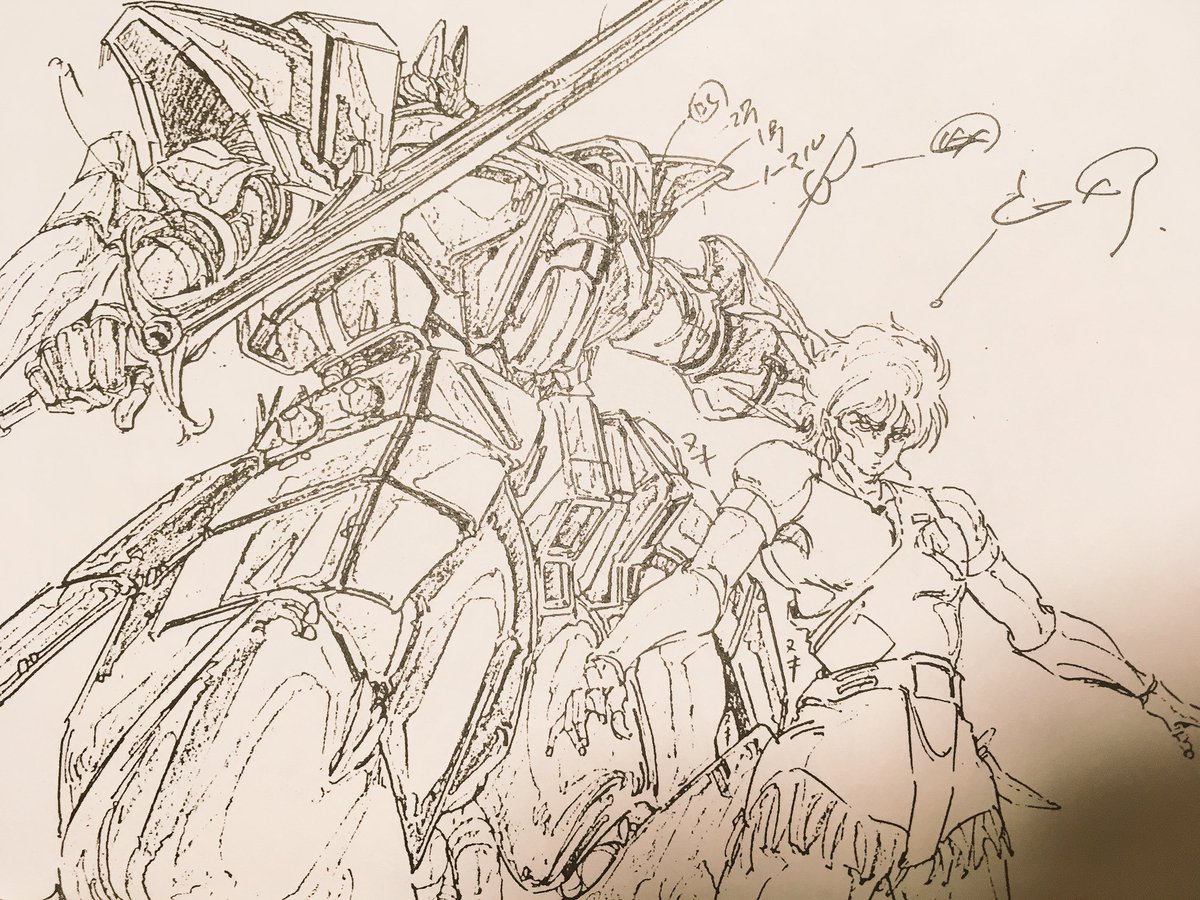
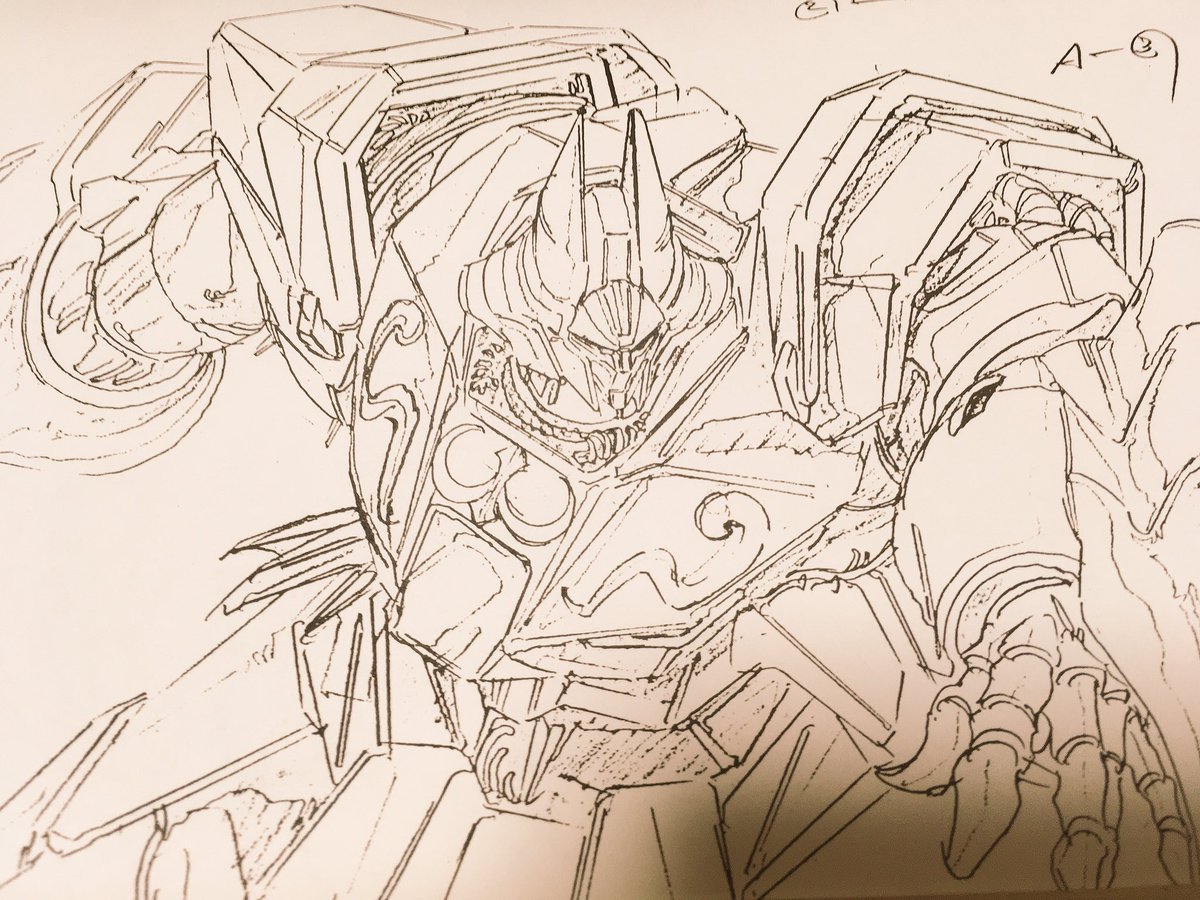
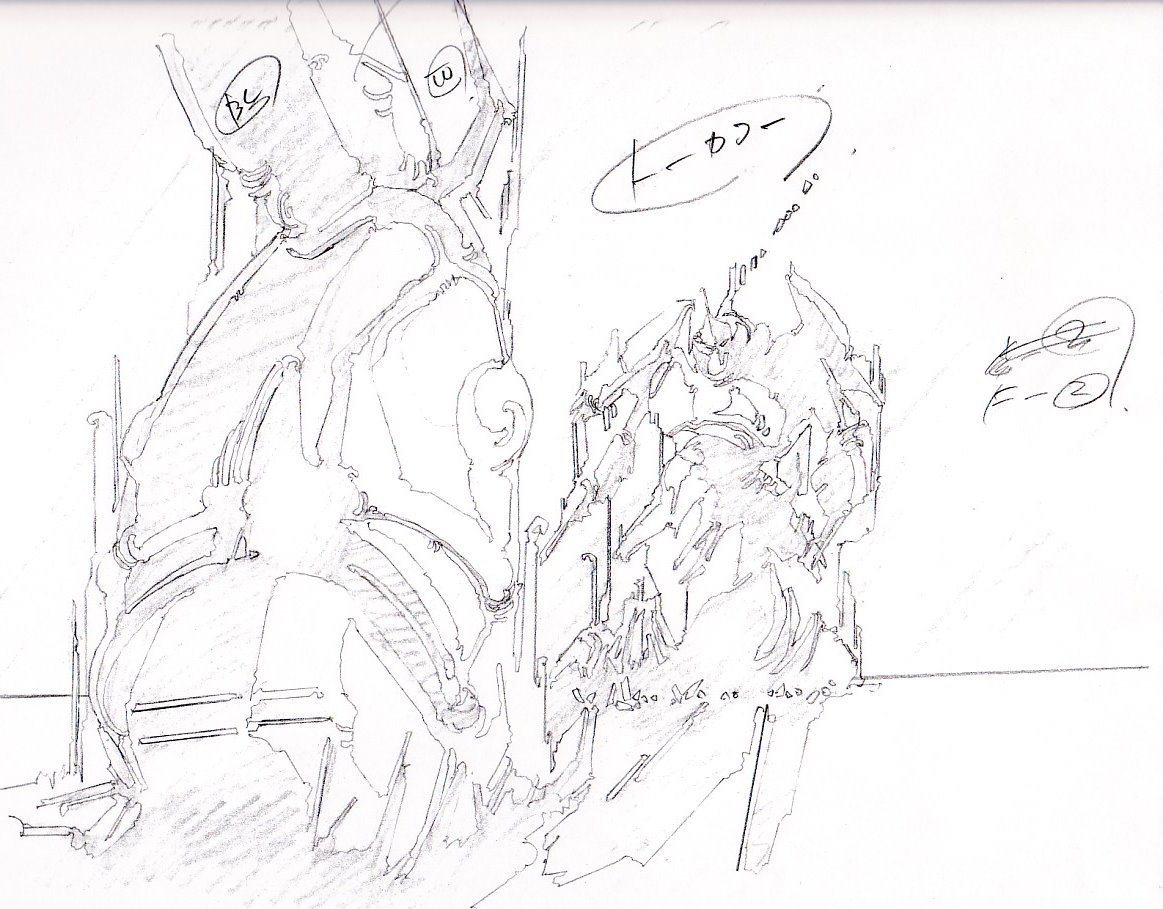
The next two years Ohira kept improving more and more. He had a fantastic cut on Gundam ZZ showing off the level of detail yet difficulty trying to get his heavily shaded mechs to move. His cuts on an episode of Machine Robo pushed him even further into doing Wakame shadows, so much to point where the distinction of what part of the mech is what was a little hard to make out. Ai City Ohira ahead with Kanada disciple Koji Ito, Masayoshi Tano, and another premiere up and coming realist at the time Satoru Utsunomiya. Gall Force had him still push the Wakame direction.
On Bubblegum Crisis we get some of Ohira’s craziest animation to date at the time.

Working alongside the rising Masami Obari, another Yamashita influenced animator who would shock the mecha world for another 5 plus years, and beyond with his dynamic artistic sensibilities, and also a young Takeshi Honda who soon would transfer over to Hideaki Anno’s team at Gainax, Ohira had to give his all here. His mechanical skills are off the charts here building up everything he had done in regards to shading beforehand and having mastery over that in each frame. The effects are jagged and sharp as ever too. While he is sensational in that department, he was presumably given another cut involving people too. The movement is good, but Ohira keeps a level of great expressions, amongst the detail oriented effects.God Bless Dancouga was one of Ohira’s first big movie credits pitting him with Obari and Ito. Ohira in this movie got to play around with faster timing, being allowed time to splice together effects cuts. He gets progressively more spindly in his smoke effects doing individual contrails of smoke rather than being rather than one big initial cloud, but then there is one cut that highlights a sensational feeling of depth and scale that put him more in line into a realism category. There is more variety among the explosions, from the background fire plumes, to the water, that branch out in a funnel like shape, and makes for a good look.
On Black Magic M66, Ohira first met up with AD Hiroyuki Okiura another great mecha animator at the time who help foster and innovate the realist field, along with director Hiroyuki Kitakubo and another future Production IG affiliate Kazuchika Kise. Ohira only had one scene here, and while not crazy for him he was dealing with more realistic layout. A building collapse is pretty hard to even back then, and the grounded nature of Okiura and Kitakubo’s shot composition allowed Ohira more time to focus on the movement of falling objects in frame rather than being overtly detailed. Gal Force Destruction 2 lead to a severe overhaul in effects work with way more ostentatious movement in a beam rather than a few individual moving bits that converge together, this scene took three months to finish!
For 1988, this was one of Ohira’s busiest and important years of formative animation. For the first time Ohira got an AD role, for mechanical animation on Dragon’s Heaven. He put in a fair bit of mecha action, with the strangest designs he’d work with, heavily inspired by artist Moebius, known for his flat pastel colors paired with dirty and gritty sci fi apparel. While being paired with Yamashita and Osamu Kobayashi he feels like he is on a totally different level than them. Ohira’s animation has a flow and movement to it now, versus the stilted Kanada animation he had done in prior years. I mean look at this character acting its pretty natural for the time.
Then for his next film he’d make another big acquaintance on one of the biggest anime movies of 1988 Char’s Counterattack

The polarizing ending to a near ten year trilogy of Gundam, Counterattack enlisted the help of several newfound realists in a busy movie with a lot of action. Brought on by Umetsu, who dazzled and wowed with the Char flashback sequences on the film, Ohira was brought on for one scene, and accompanying him from several episodes of shows from a few years prior was Mitsuo Iso. Iso had been a frequent congregate to Ohira’s animation, and he’d take on a very different approach to realism in the future. The Gundam scenes are best drawn by Ohira who gets a lengthier cut with tricky effects. Iso on the other hand focuses on more character acting, and battling at the same timeOn Kujakuou, Ohira made his first affiliation with his soon to be best friend, Shinji Hashimoto on their first credited work together. This is one of the earliest instances of Ohira’s amorphous character animation paired with effects. Though this style was in its infancy, not quite getting to the way its known for now, this was a stepping stone.
Just because Char was the biggest anime film of that year in Japan, doesn’t mean it was the most influential, enter Akira

Monumental, and a game changer for anime animation for years to come. Katsuhiro Otomo being a mangaka was just as effective as a studio lab rat and storyteller here in a stone cold classic. This entire movie is a picturesque example of perfect circumstances, bringing together the greatest animators of all time onto one project. On AD Koji Morimoto and Takashi Nakamura has been workshopping their respective style for over 5 years now, both getting on animation intensive projects early on like Genma Taisen and Nausicaa to unknowingly prep themselves for this role. Nearly the entire caravan of realists needed to be assembled for this film, divulging into several schools of animation. The first being the triage of Ghibli adjacent Telecom animators including Shinji Otsuka, Masaaki Endo, Makiko Futaki, and Toshio Kawaguchi. These four had all endured the wrath of Miyazaki and they’d show of their insane skills here being placed on complicated action and morphing scenes. Then Yasuomi Umetsu and Yoshinori Kanada brought from past Otomo works like Genma Taisen, Kanada infamously having an invisible cut on this film. Ohira was apart of the Nakamura/Kanada styled school of character acting along with Hiroyuki Okiura. Shinji Hashimoto, Satoru Utsunomiya, and Toshiyuki Inoue were among the big realists who had began to leave a sizable impact prior to the film’s release. Then you have a large grouping of animators making their big debuts here. Future Studio 4C director Tatsuyuki Tanaka makes his genga debut here, along with another Kagiyoshi Naginuma and TMS animator Hiroyuki Aoyama does a myriad of explosions here being his first big KA job. Osamu Nabeshima, Jiro Kanai made up the old guard of animators with Hirotsugu Kawasaki being one of the younger unkempt specialists outshining the older guys. Then perhaps the most unusual of this large ensemble was a lone Shin Ei animator named Yoshiji Kigami who’d down the line would be probably the most successful of the bunch, mentoring a large school of realists that still have precedence and a lasting impact in anime today, Kyoto Animation. If you want to know how many famous animators got their start, it’s right here. So many schools of realism animation would converge here, and immediately diverge afterwardsOhira and Hashimoto were both placed on solo scenes. Ohira’s first scene was an effects heavy one, pushing out a lot of smoke, and visibly animating wind
This breakdown shows Ohira was instructed to layer different elements together making the scene work.
The second scene he was on placed him with Ghibli’s Masaaki Endo, who at the time was one of the premier effects animators in the industry next to Hideaki Anno. With the destruction of Neo Tokyo caused by Akira, the blinding light takes over the skyline decimating skyscraper after skyscraper. Ohira was only placed on a sparring amount of cuts, but his approach to effects was way more maximal than Endo’s. It is visually stunning and one of the best scenes of each artist’s respective careers.
Ohira did several shows for the next 8 months. All that Gundam, Riding Bean, but one of the more important was Takashi Nakamura’s Peter Pan* anime. This put him into closer proximity with a more seasoned Mitsuo Iso, but also Hiroyuki Okiura. Who’s realism began to come into shape, with a tempered and realistic approach to depicting volume on objects and people. Ohira was once again put on cuts showing off wind and destruction, and he does this with a lot of personality and verisimilitude.
A stirring shift, and a big influence on Ohira’s offbeat approach would come in the shape of Gosenzo-sama Banbanzai

Directed by Mamoru Oshii with articulated mannequin looking character designs debuts by Satoru Utsunomiya, the 6 part OVA was an ambitious even for this new slew of realists to show off their s***. Iso was one of the best at this, taking up minutes of scenes to display a new form of animation called, full limited. All key frames, no in-betweening. For Ohira and Hashimoto, the two got to push the predictability of their animation and be flexible in a show that emphasized freedom. On character acting Ohira was got a bit used to it than usual, easily conveying personality, and also doing more drawings before locking in on key frames. His approach to realism after Akira feels more akin to Nakamura’s innovations rather than the Kanada Ghibli esque approachThe level of realism was more readily apparent on Itano’s Angel Cop too in which Ohira was more stringent on placing as much detail into every frame
Ohira’s overt reliance on effects meant Shinji Hashimoto and other animators around him had to be impressed by his gait whenever he stepped in. One scene in particular that stands out is a scene with a motorcycle about to drive off. There is fastidious detail to the control panel of the bike with the knob turning, and even has Itano flexing his own company in the scene. Ohira kills the effects animation
After doing smaller side projects we are now into the 90s and Ohira and Hashimoto got to pair together to dazzle and wow on the first episode of The Hakkenden
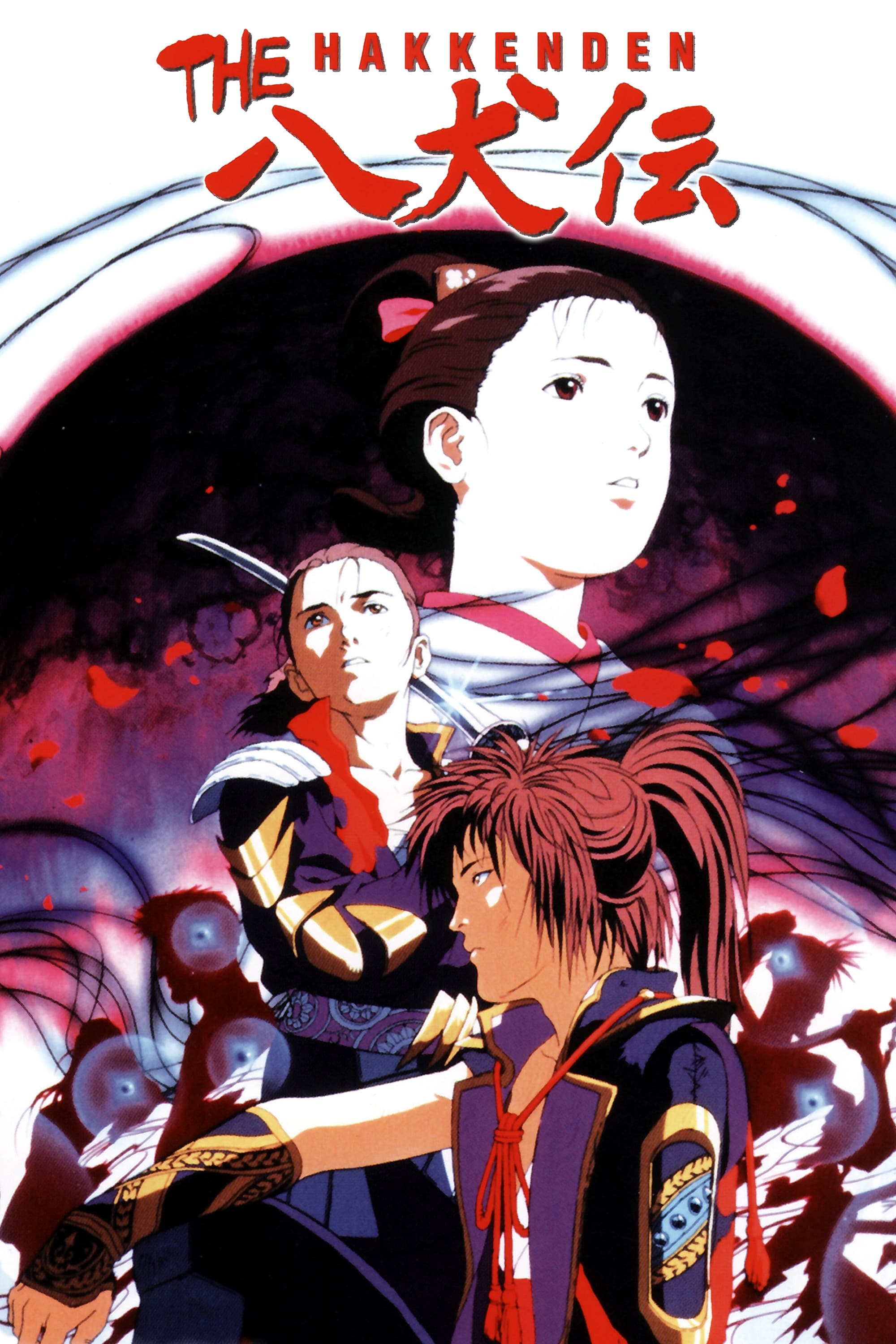
From effects animation goodness to insane character acting this episode had nearly everything. Ohira and Hashimoto’s supervision make for some crazy effects on a very uneven show animation wise. Okiura shows up and shocks everyone, with his insane fight choreography, with extremely advanced layout sections
All Okiura
Mitsuo Iso followed suit too. They were also pushing the lengths of modulation, opting for 1s in pivotal moments. Ghibli’s Osamu Tanabe came on as a freelancer, and his animation was a bit more traditional but through the process of corrections had some characteristics of the two AD’s too. Perhaps the zaniest part of the episode is the spirit/yokai? attack scene with Umetsu, Hashimoto, and Ohira all contributing
unknown who did what, but Ohira and Hashimoto clearly did the effects
This scene was singlehandedly responsible for changing effects animation in the 90s. Fire and liquid are too separate things, but Ohira and Hashimoto made an example to merge the two together making for a strange result. That lack of distinction made these kinds of effects very useful in the future for animators to tackle ghosts, or supernatural effects animation with that kind of hybridization. This kind of disregard, or lack thereof with following guidelines to even elemental principles was a key in helping the creation of flow animation where movement is a primary focus over anything.Ohira continued his ambition streak on Violence Jack. While there are elements of Ohira’s old style creeping in here he started to change things up. The first scene he’s placed on begins to show off the melting unstable effect I had described, but this time he began to follow through with it. There is even more tighter spacing than usual, and the line blurs with his frame modulation. The scene proceeding this takes more of his original style with the first cut being an example of him going in a more nightmarish direction.
On Yunemamkura Baku Twilight Gekijo Ohira, Hashimoto, and several others were put on short animations coordinated by Ichiro Itano, this being one of the last times him and Ohira collaborated.

Hashimoto was placed on one short where he did some very crazy designs inspired by yokai artwork. Ohira’s short was one of the rare and perhaps only instance where he directed, storyboarded, character designed, and wrote his own material on “Antique Shop”. Ohira, Hashimoto, and Iso had a sort of leadership over the roles with Tanabe, Tatsuyuki Tanaka, and Katsuyoshi Naginuma being the younger guys falling in line. Inspired likely by passing scenes of rotoscoping on Nakamura’s section on Robot Carnival instead of going into abstraction of human form like Utsunomiya or even Umetsu’s “pretty realism” as I like to call it, Ohira went 100% photorealistic with the character designs.


While not totally removed from the stylization of Akira and Banbanzai (big forehead, and square anatomy) Ohira feels closer to realism than he ever has before animating wrinkles, simple outlines of faces, and also Asian people that look like Asian people. Tanaka and Iso are the MVPs here able to instill a high level of believability into that feeling. Tanaka’s scene is particularly difficult for animators to take on, he heavily modulates between 1s 2,s while also bearing in mind the drunken phenomena taking place on screen. The low angle shot of the character falling is a hard shot to do as that kind of perspective takes into account numerous ligaments of the body for foreshortening.After Ohira did subtle work on Only Yesterday and wowed with effects on Porco Rosso (his last credit with Yoshinori Kanada) we get to the Junkers Come Here Pilot in 1993

Ohira 0:36-1:25 with Manabu Ohashi for the Junkers cut, then Osamu Tanabe and Ohira, I think he did corrections, he’s all over the short animating important scenes with others
The importance of this short is how Ohira was going the extra mile to portray realism, but not in any way close to what Okiura or Kise were doing on Patlabor where it was more lifelike. While Ohira does maintain that sensation of volume that they do there is more of an uneven timing to the cuts. And where the cuts taken from references, there is less of a performative aspect that Okiura indulged in, and more so a painterly quality that emulates the naturalistic beauty of the subtleness of human motion.Take this cut by Tanabe for example. He isn’t exactly trying to showcase or highlight any qualities of the character’s expression, rather accentuate the body language of the cut to help get the line across. It is so close to rotoscoping that it feels like it, but the uncanny quality is gone from the equation giving a vibrant and believable performance here. Also the excruciating detail from the hair, to key chains on the backpack are all followed in the motion of the cut. Ohira also is able to add in his newfound melting quality that comes in the form of cuts like this, where form seems to nearly dissipate at any second


















